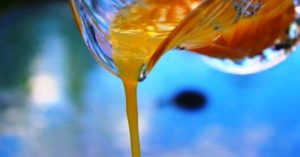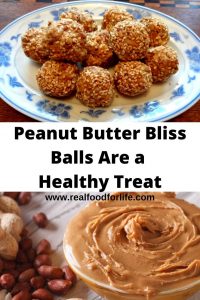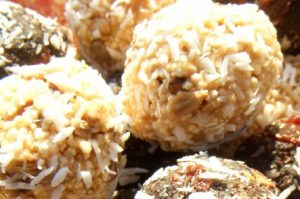Around the world, the bees are dying.
Discover why, how you can help, and a bit of bee trivia.
If this trend continues 1/3 of our food crops will be in danger of disappearing, including foods many of us love…
- apples, peaches, pears
- blueberry, raspberry, blackberry
- almonds, Brazil nuts
- pumpkins – all squashes
- avocado
- mango, star fruit
- cocoa…yes chocolate!
These foods are dependent on bees to pollinate, and so while bees are making delicious honey with all it’s health benefits, they are also helping the whole world.
Why is this happening? No one knows for sure but here are possible causes:
- Insecticides
- Malnutrition
- Lost genetic diversity
- Antibiotics
- Virus and fungi
- Genetically modified crops
- Electromagnetic radiation
- Loss of habitat
Many of these causes are also affecting other plants and animal species on this earth.
Some of these may even be influencing your own health!
Although there has been some attention from the press about this problem, it’s not enough.
Many people categorize this trend in the same distant way that they think about the loss of some exotic creature like panda bears. Bees may not be cute like pandas but they are so much more vital for our own life.
Following is a closer look at the problems and solutions:
1. Insecticides (one of the leading suspects):
Recently Monsanto’s Roundup has been shown to cause bee death. (read here: Roundup To Blame) Since roundup is used so much over the world, this is highly significant.
In 2011, leaked documents exposed the U.S. Environmental Protection Agency’s (EPA) illegitimate approval of clothianidin, a highly toxic pesticide that the regulatory agency knew was capable of killing off bees.
Also, a new study out of Purdue University confirmed, once again, that clothianidin is killing off bees, but also that clothianidin’s toxicity is systemic throughout the entire food chain.
2. Malnutrition:
Nutrition for bees might sound rather odd since they eat only nectar and pollen. What has happened though, is that honeybees don’t have the VARIETY of flowers available to them because man has destroyed much of their habitat. We humans like our environment orderly so we clear the ditches of wildflowers and kill all the dandelions and clover in our lawns. To bees, these areas are now nutritional wastelands. Bees love weeds!
3. Lost genetic diversity:
Like many other foods we eat, genetic diversity has been reduced by industrial agriculture which only wants a small limited amount of species and genetic traits which seem profitable and simple to manage. These later turn out insufficient to withstand outside pressures from the environment.
4. Overuse of Antibiotics and miticides:
Many beekeepers use antibiotics and miticides (which kill mites) .
Even children in kindergarten are now being taught the limitations and problems associated with the overuse of antibiotics. common knowledge
5. Virus and fungi:
Like all living beings on this earth, bees are under constant attack from evolving predators. The fact that viruses and fungi are now overcoming bee populations shows that the immune strength and overall health has been compromised by the preceding factors.
There seems to be an overriding factor decreasing the overall health of bees; thus making them more susceptible to poisons and infections. What the scientists suspect and are still proving is that the bee’s natural defenses are being undermined by POOR NUTRITION and other unnatural living conditions.
6. Genetically modified crops:
Some genetically modified (GM) crops produce the natural insecticide Bt toxin, which in theory could affect bees. Although this is probably not a significant reason for bee loss it underlies the ideas that ALL ecosystems are interconnected and that man cannot hope to manipulate all the factors.
7. Electromagnetic Radiation:
Again this is not likely to be a major contributor to bee colony collapse but could be a minor one.
A study at Kerala India by the Research Lab of Zoology showed that when active mobile phones were kept inside beehives, worker bees stopped coming to the hives after ten days. The same study also found a drastic decrease in the egg production of queen bees in these colonies.
This topic is again something we are getting more familiar with. The apple iphone 4 comes with a warning not to hold it closer than 5/8 inch away from your body.
8. Loss of Habitat:
This factor is closely related to poor nutrition already mentioned. There is not enough unused land to supply the variety of wildflowers etc which bees thrive on.
Bee Trivia
- Albert Einstein did NOT say “If the bee disappeared off the surface of the globe then man would only have four years of life left.”
- Bees have been on earth about 3 times longer than the Rocky Mountains – about 150 million years.
- The queen bee lays from 1000 to 3000 eggs per day and eats 80 times her own weight in food.
- Bees have 5 eyes, can see ultraviolet, and can detect movement 6x faster than man.
What to Do?
The bee industry is hopeful that restoring balance to the diet and habitat of bees can improve their well-being and prevent total colony collapse. Here’s hoping. 10 steps you can take next page.
1. Stop using insecticides.
Simple really…just do it.
2. Avoid seeds coated with insecticides.
You may not know it but many seeds are now coated with Clothianidin.
3. Read labels on garden compost.
Beware hidden killers. Some garden composts contain Imidacloprid – a deadly insecticide disguised as ‘vine weevil protection’.
4. Plant Bee-friendly plants.
Buy wildflower seeds from seed merchants, and sow in any spare patch of ground
5. Create natural habitat gardens.
Let some space in your garden go wild. It’s a safe haven for bees and other insects.
6. Become a beekeeper.
Beekeeping is a most enjoyable, fascinating, and interesting hobby and you get to eat your own honey! If this is too much consider offering space in your garden to local beekeepers.
You can become a beekeeper, of sorts, by raising Mason Bees or simply have suitable homes in your yard.
7. Buy local honey.
Support your local beekeepers
8. Make your own ‘Wild bee’ house.
Providing a simple box as a place for bees to set up home is very helpful to the bees without requiring you to look after them. Ideas for such boxes can be found online.
In Canada, you can buy Mason Bee kits which have not only the homes but live Mason Bees as well. Mason Bees are solitary bees that are much more active at pollination than honey bees.
9. Get Active!
Sign petitions and lobby your local MP.
10. Spread the word!
Comment on this post. Share it with others. Participate in Care2 groups.
Honey Recipes and Beauty Treatments:

Honey Syrup – contains the goodness and taste of both honey and molasses. It’s also not so sugary because of the added water.
Orange Honey Syrup – This Orange Honey Syrup is a much healthier syrup than the usual syrups on your pancakes or waffles. It has less honey in it because of the orange juice which makes it delicious. The zing of the orange make is very tasty.
Dandelion Flower Syrup – combining the goodness of honey with another superfood: dandelions. This syrup is a great treat from your weeds and it is so easy to make. See why I am mad about dandelions – and their amazing health benefits. 
Peanut Butter Bliss Balls The name says it all! These peanut butter balls are so tasty that everyone likes them. Peanut butter is high in protein and can help with diabetes, weight loss, and Alzheimer’s disease.
Carrot Face Mask The ingredients for this are already in your kitchen. Also called Honey Carrot Face Mask. Give it a try! Easy, inexpensive, and healthy! The ingredients contain natural antiseptics and antioxidants which kill germs and protect the skin from damaging free radicals.
Discover the 10 Health Benefits of Honey, made by bees is one of the oldest sweeteners on earth. It is a delicious part of any dessert made with it; see some of my favourite recipes at the bottom of this article too.
Copyright © Randy Fritz You are welcome to share this article with anyone who you think may benefit from this information as long as you give credit to Real Food for Life by including the link to the home page www.RealFoodforLife.com or the direct link to this post.





